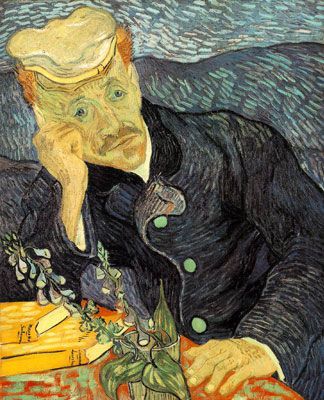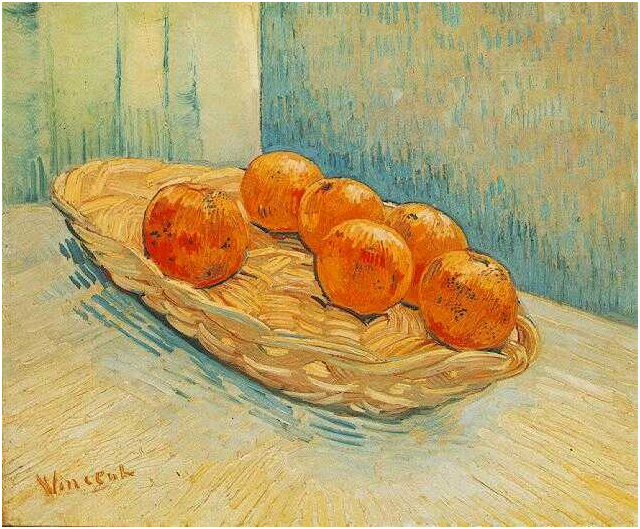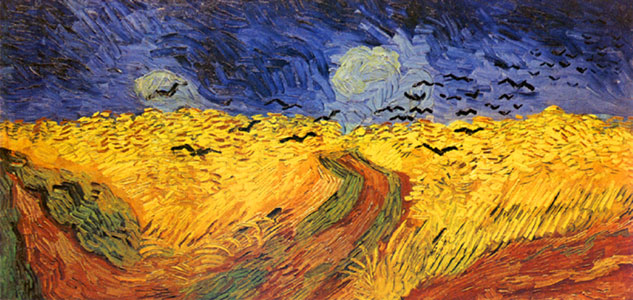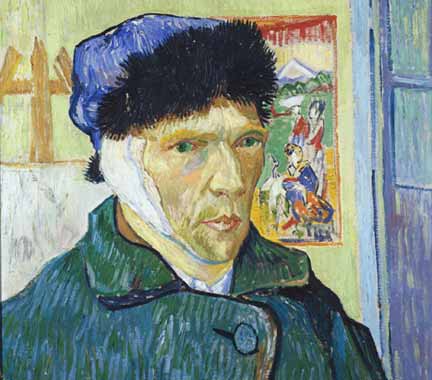
A Relative Clause is a part of a complex sentence which describes or explains the word in the main clause.
f.ex The flowers which you see in the picture are called irises.
♦ – the Relative Clause
♦ – the Main Clause
The relative pronoun ”which” refers to the word ”flowers”.
Which is used for things and animals.
Irises, Vincent van Gogh, J. Paul Getty Museum, 1889
2

WHO
If a relative clause refers to a person, we use the relative pronoun ”who”.
f.ex. The man who is depicted on the painting is Vincent Van Gogh.
The relative pronoun ”who” refers to the word ”man”.
The Starry Night
Vincent van Gogh
(Dutch, 1853–1890)
4

WHOSE
The relative pronoun ” whose” is a possessive pronoun and refers BOTH to people and objects.
f.ex. I like the painter whose picture you can see now.
OR: The picture whose colors are so vivid is painted by Van Gogh.
In the first example ”whose” refers to the word ”painter”, while in the second one it refers to the word ”picture”.
6

WHERE
The relative pronoun ”where” refers to a place.
f.ex. Van Gogh liked to depict the country where he lived.
Vincent van Gogh – Mountainous Landscape Behind Saint-Rémy, 1889 – Musée de O
8

WHEN
We use it when describing a day, a year, a moment,etc
f.ex This selfportret was created by Van Gogh at the time when he cut his own ear.
10
11
WHOM
Whom is used in OFICIAL language only when the word it refers to is an object:
f.ex. The person whom you may see in the picture was
___________________object subject predicate
Van Gogh’s physician.
COMPARE:
The person who is depicted here is Van Gogh’s physician.
_____________subject predicate
Van Gogh, The Portret of Paul-Ferdinand Gachet (1890), private collection
12

13
THAT
It is used in informal speech ONLY for people, animals and things.
NB! We can use it ONLY in DEFINING clauses.
COMPARE:
Defining: The oranges whichthat you see in the picture look very appealing.
Non-defining: These oranges, which you see in the picture, look very appealing.
14

Van Gogh: Still Life with Basket and Six Oranges, 1888, private collection
15
Defining and Non-defining Clauses
If the information in the relative clause is ESSENTIAL for our understanding the sentence, the clause is Defining.
f.ex. The town where Van Gogh spent his last years is situated in the south of France.
If the information is EXTRA information, the clause is called Non-defining.
f.ex. Arles, where Van Gogh spent his last years,
is situated in the south of France.
NB! We use COMMAS with Non-defining Clauses.
Vincent Van Gogh, Entrance to the Public Garden in Arles,1888,The Phillips Collection, Washington, D.C.
16

17
Omitting Relative Pronouns
Relative pronouns WHO, WHICH, THAT can be omitted if:
a) they are objects and followed by a sentence(Subject + predicate
b) they are a part of a defining clause.
f.ex.The landscape (which) you see now was created by Van Gogh in 1890, a few weeks before he commited a suicide.
”Wheatfield with crows”, which is one of the most famous Van Gogh’s painting, was created in 1890.
(Non-defining clause + ”which” is a subject)
Van Gogh, Wheatfield with Crows, 1890, Van Gogh Museum, Amsterdam
18

19
Relative Clauses with Prepositions
When the relative pronoun is the object of a preposition we usually put the preposition after the verb.
f.ex. Van Gogh liked to draw the room which he lived in.
In official language, however, the preposition comes before a relative pronoun.
f.ex. Van Gogh liked to draw the room in which he lived.
NB! We may use ”where” instead of ”in which”.
Vincent’s Room, Arles
1888; Vincent Van Gogh Foundation, Amsterdam
20

Now watch the film and write 5 sentences with relative clauses , using the information from the film.
22
23
When a Relative Clause Refers to the Sentence
Sometimes a relative clause refers to the whole sentence. In this case, it begins with the pronoun
”which” and is separated from the main clause by a commas (,).
f.ex. He came late , which surprised everyone.
Now, complete this jigsaw puzzle for another example.
25
26
28
You can learn ANYTHING!
29
Published: Jan 31, 2017
Latest Revision: Feb 4, 2017
Ourboox Unique Identifier: OB-235499
Copyright © 2017











